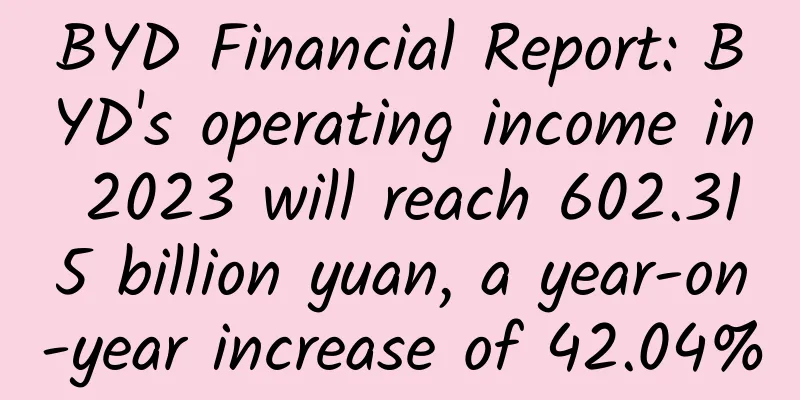Capturing carbon dioxide! The magic formula for low-carbon living

|
Produced by: Science Popularization China Produced by: Zhiyao Science Producer: Computer Network Information Center, Chinese Academy of Sciences On August 23, 2021, the 31st National Energy Conservation Publicity Week officially kicked off. In this Energy Conservation Publicity Week, the concept of "carbon" firmly occupied the center position. Not only was "energy conservation and carbon reduction, green development" selected as the publicity theme, but concepts such as "carbon peak", "carbon neutrality", "carbon trading" and "carbon fixation" were also mentioned many times. At present, my country is constantly improving its green and low-carbon policies and market systems, striving to achieve carbon peak by 2030 and carbon neutrality by 2060. To achieve the goal of carbon neutrality, on the one hand, people need to practice a green and low-carbon lifestyle and reduce carbon emissions; on the other hand, engineering and technical means are also needed to properly dispose of the carbon that has been emitted. On June 17, 2021, the National Development and Reform Commission issued the "Notice of the General Office of the National Development and Reform Commission on Requesting Reports on Carbon Dioxide Capture, Utilization and Storage (CCUS) Projects", naming CCUS technology as the key technology in the "carbon recovery" link. As soon as this document was released, it caused quite a stir in academia and industry. So, what exactly is CCUS technology? How can we use CCUS technology? And how can it help achieve carbon neutrality? The life of recycled carbon CCUS, the full name of which is Carbon Capture, Utilization and Storage, means carbon capture, utilization and storage technology. In order to understand the significance of this technology, let us first look at how carbon spends its "life". Just as water on Earth continuously circulates between land, ocean and atmosphere in the form of gas, liquid and solid, the carbon element on Earth is constantly exchanged among the biosphere, lithosphere, hydrosphere and atmosphere, and circulates with the movement of the Earth. Carbon is a common but wonderful element. By linking with each other, it can form various organic substances and then evolve into a variety of life forms. The process of biological activities and reproduction is always accompanied by the metabolic cycle of carbon. Since the transformation of elements rarely occurs on Earth, carbon on Earth is basically conserved. Any physical and chemical process involving carbon must obtain carbon from one place and transfer it to another place after the process. In ancient times, when uncivilized humans first lit fire on wood, carbon dioxide was emitted. At some point later, this carbon dioxide was absorbed by a forest and became part of the forest wood. The carbon in these woods was either burned and re-entered the atmosphere, continuing to participate in the flow process and becoming "mobile carbon"; or buried underground and gradually carbonized into fossil fuels, entering the lithosphere and becoming "dormant carbon." This forms a simple "carbon cycle" process. The cycle path and magnitude of carbon in the earth (the red part is the emission part under human influence, the yellow part is the carbon cycle flux in nature, and the white number represents the stored carbon, in billions of tons of carbon) (Image source: Reference 1) During the evolution of the earth, which takes tens of thousands of years, more than 99.9% of the carbon element has turned into carbonates, coal, oil, natural gas and other substances, buried deep underground or in the sea, and entered a "dormant" state, no longer participating in the cycle. However, with the continuous development of society, the demand for fossil fuels has increased day by day. The "dormant carbon" deep in the lithosphere has been mined and used in large quantities, re-entering the atmospheric circulation and becoming "mobile carbon". Since 1965, the growth of global GDP has been highly consistent with the trend of carbon dioxide emissions. It can be seen that the consumption of fossil energy has promoted the development of human society. Carbon dioxide emissions and GDP growth curve (Image source: Reference 2) However, with the accelerated exploitation of fossil fuels, the concentration of greenhouse gases in the atmosphere continues to rise. From 1985 to 2020, the concentration of carbon dioxide in the atmosphere increased from 345ppm to 412ppm (Note: ppm, part per million), an increase of 20%, with an annual compound growth rate of 0.51%. The increase in greenhouse gas concentrations has led to a significant rise in temperature. According to data from the World Meteorological Organization, the global average temperature in 2020 was 1.2±0.1°C higher than the annual average temperature benchmark from 1850 to 1900, and the global average sea level rise rate reached 3.3±0.3mm/year. Rising temperatures have increased the evaporation of the oceans, and a large amount of water has been input into the atmosphere, causing a sudden increase in rainfall in some parts of the land in a short period of time. The continuous heavy rains in Zhengzhou are a typical example. The intensification of the greenhouse effect has reduced the stability of the environment, and extreme weather has become more frequent, with an increasing number of weather events that are "unprecedented in a century or a thousand years." Global Industrial Revolution Average Temperature Difference, based on the average temperature from 1850 to 1900 (in °C) (Image source: Reference 2) To prevent the situation from getting worse, humans must work together to reduce the content of "mobile carbon". There are currently two main paths: first, reduce carbon emissions and reduce "mobile carbon" from the source; second, capture, use and store more "mobile carbon" so that it can be consumed and recycled. The latter refers to CCUS technology. What is CCUS: Carbon Capture, Utilization and Storage Technology The entire process of carbon capture, utilization and storage technology (CCUS) can be simply summarized in four words: collection, transportation, storage and use. "Capture" refers to carbon dioxide capture, which is the process of separating carbon dioxide from industrial production, energy utilization or the atmosphere for subsequent treatment. It is mainly divided into pre-combustion capture, post-combustion capture, oxygen-enriched combustion, chemical chain capture and direct capture from the atmosphere (DACCS). "Transportation" refers to the transmission of carbon dioxide, which is the process of transporting captured carbon dioxide to usable or storage sites through pipelines, compressed transportation, etc. "Storage" refers to the storage of carbon dioxide, which is to inject the captured carbon dioxide into deep geological reservoirs to isolate the carbon dioxide from the atmosphere for a long time, thus entering a "dormant state". The main storage methods are land storage, ocean storage and carbonate solid storage. "Use" refers to the utilization of carbon dioxide, which is the process of realizing resource utilization of captured carbon dioxide through engineering and technical means. This is also a key step in "turning carbon into treasure". In addition, the direct use of trees and other organisms to fix carbon dioxide in one step has also been included in the framework of CCUS technology, listed separately as the biomass utilization process (BECCS), which is different from other artificial technologies. Generally speaking, CCUS technology can separate carbon dioxide from industrial processes, energy utilization or the atmosphere, and directly utilize or inject it into the formation, turning carbon into a "resource" or "dormant" to achieve permanent emission reductions. Schematic diagram of CCUS technical process (Image source: Reference 3) “Turning Carbon into Treasure”: How Can Carbon Dioxide Be Used? If all the carbon dioxide captured by CCUS technology is buried underground or in the deep sea, it may cause a waste of resources. Can we think of ways to use it? And how can we do it? According to different engineering and technical means, the "utilization" step can be divided into geological utilization, chemical utilization and biological utilization. In terms of geological utilization, China's carbon dioxide geological utilization and storage projects are mainly aimed at improving oil recovery (carbon dioxide enhanced oil recovery, CO2-EOR), and are mainly carried out around several oil and gas basins, including the Songliao Basin in Northeast China, the Bohai Bay Basin in North China, the Ordos Basin in Northwest China and the Junggar Basin; at the same time, there is also carbon dioxide displacement of coalbed methane (CO2-ECBM) technology to improve coalbed methane recovery. Carbon dioxide enhanced oil recovery, CO2-EOR (Image source: Reference 4) In terms of chemical utilization, the application scenarios are very diverse, such as: injection into beer and carbonated beverages; making dry ice for refrigerated transportation of food, etc.; supercritical extraction of carbon dioxide; synthesis of fine chemicals such as organic small molecules or common chemicals such as urea and carbonates; carbon dioxide synthesis to make plastics; catalytic production of methanol, olefins, and synthesis gas; mineralization utilization of steel slag and phosphogypsum, and many other uses. In terms of biological utilization, in terms of the overall carbon cycle process of the earth, fixing and converting carbon dioxide through biological methods is the most natural way of utilization on earth. Carbon dioxide can be used to cultivate plants or algae with short growth cycles to produce biofuels. At present, microalgae and other organisms are mainly used to fix carbon dioxide and convert it into biofuels and chemicals, which can be further processed into biofertilizers, food additives, etc. At the same time, since microalgae can use domestic and industrial and agricultural wastewater as a source of nitrogen, phosphorus and other nutrients, it is possible to couple the three processes of wastewater treatment, carbon dioxide fixation and biofuel synthesis, thereby maximizing the economic and environmental benefits of the process. Panorama of CCUS technology in China (Image source: Reference 3) CCUS technology promotes low-carbon living What role can CCUS technology play in my country's journey to "carbon neutrality"? In other words, what goals do we expect to achieve through the application of CCUS technology? According to the International Energy Agency, CCUS is expected to contribute about 14% of the world's carbon dioxide emissions reduction by 2050. What does this mean? Let's look at some numbers: Total global carbon emissions: 32.28 billion tons in 2020; China's total carbon emissions: 9.894 billion tons in 2020. Assuming CCUS technology contributes 14% to emissions reductions, the world can reduce emissions by 4.5 billion tons a year, which is approximately half of China's emissions; China can reduce emissions by 1.4 billion tons a year, which is close to the total emissions of China's entire steel industry. CCUS CO2 emission reduction demand potential in various industries from 2025 to 2060 (Image source: Reference 3) Maybe one day, we will use natural gas supplied by CO2-ECBM technology to ignite natural gas stoves, use dry ice supplied by CCUS technology to refrigerate food, drink canned beer and cola produced by DACCS technology, and truly integrate low carbon into our daily lives. By then, you will find that CCUS is not far away from you and me. References: (1) Wikipedia-ZH, Carbon cycle. (2) Wang Jingjie. The development path of the global carbon emission trading market[N]. Futures Daily, 2021-07-21(003). (3) Ministry of Ecology and Environment of the People’s Republic of China, 2021 China Carbon Dioxide Capture, Utilization and Storage (CCUS) Annual Report. (4) National Research Council, Division on Earth and Life Studies, Board on Earth Sciences and Resources, Committee on Seismology and Geodynamics, Committee on Geological and Geotechnical Engineering, Committee on Earth Resources, Committee on Induced Seismicity Potential in Energy Technologies. Induced Seismicity Potential in Energy Technologies [M]. National Academies Press: 2013-09-14. |
Recommend
Breaking news! A 5.1-magnitude earthquake occurred in Zhangye, Gansu! In the face of the earthquake, please remember the knowledge of self-rescue and mutual rescue
According to the official measurement of the Chin...
Liandi Commercial launches new mobile payment terminal M37Q
At the end of the year, the consumption boom has ...
2016 Network Wish List: Less Hype + More Automation
[[161361]] Wishes don't always come true, but...
Trivia | Can you continue a dream that you haven’t finished the next day?
Control material method. The most common material...
Talking about Tint in Android Material Design
What is Tint When I first came across the word Ti...
Revealed for the first time! How do cattle quickly adapt to the extreme environment of the Qinghai-Tibet Plateau?
Produced by: Science Popularization China author:...
2020 Tesla Impact Report
Tesla's 2020 Annual Impact Report shows that ...
To optimize the effect of GuangDianTong, you must pay attention to these 8 small details!
Guangdiantong is one of Tencent’s two major infor...
Google Translate APP is banned! App Store rankings are rising rapidly.
Maybe everyone knows it. On March 29, Google upda...
How to get the correct way to open big V marketing?
In the current era of self-media, information int...
What materials are used for wall decoration in Lanzhou? They are environmentally friendly and cost-effective. 80% of families choose latex paint.
Wall decoration is a very important step in the d...
2022 Marketing Disruptors
If the first half of 2021 belongs to new consumpt...
A developer's guide to optimizing mobile app performance
【51CTO.com Quick Translation】 Nowadays, with the ...
Code practice for handling i18n international telephone area codes
Preface Last week, I was busy with the internatio...
3 traffic thinking methods for e-commerce marketing
When it comes to e-commerce marketing , brands ma...









